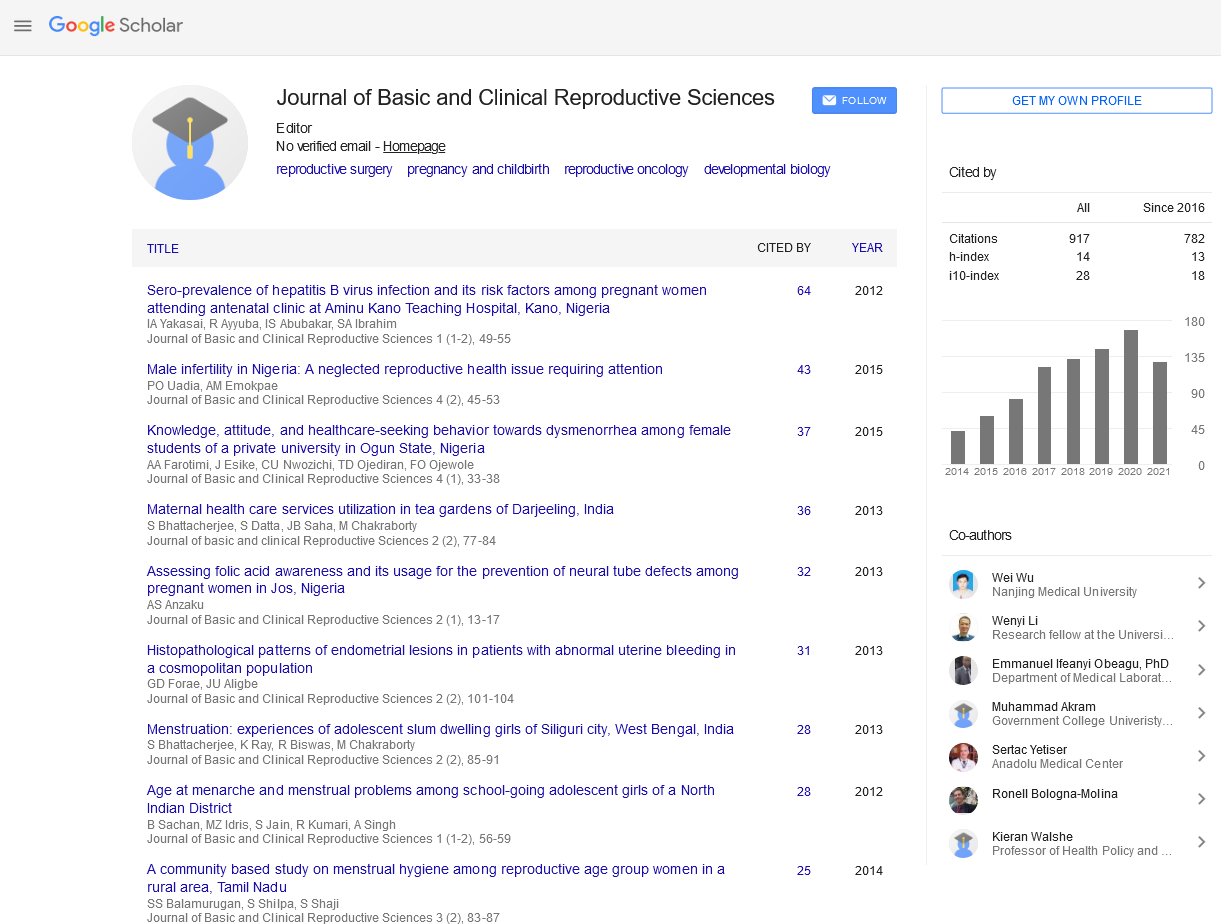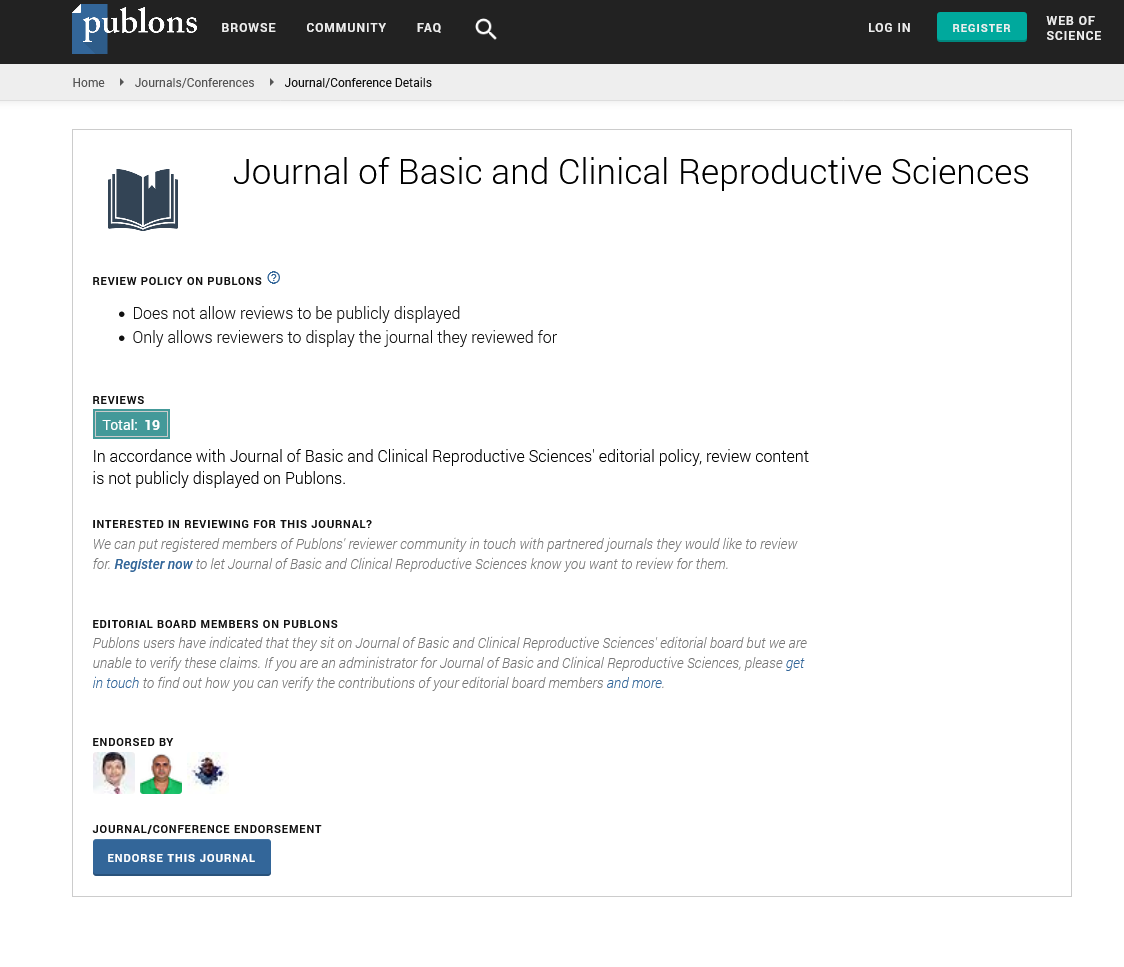Commentary - Journal of Basic and Clinical Reproductive Sciences (2023) Volume 12, Issue 2
Bioinformatics Analysis of Ovarian Endometriosis: Molecular Mechanisms and Therapeutic Insights
Received: 29-Mar-2023, Manuscript No. JBCRS-23-99220; Editor assigned: 31-Mar-2023, Pre QC No. JBCRS-23-99220 (PQ); Reviewed: 21-Apr-2023 QC No. JBCRS-23-99220; Revised: 21-Apr-2023, Manuscript No. JBCRS-23-99220 (R); Published: 28-Apr-2023
This open-access article is distributed under the terms of the Creative Commons Attribution Non-Commercial License (CC BY-NC) (http://creativecommons.org/licenses/by-nc/4.0/), which permits reuse, distribution and reproduction of the article, provided that the original work is properly cited and the reuse is restricted to noncommercial purposes. For commercial reuse, contact reprints@pulsus.com
Description
Ovarian endometriosis is a complex gynecological disorder characterized by the presence of endometrial-like tissue outside the uterus, leading to pelvic pain, infertility, and other associated symptoms. Understanding the underlying molecular mechanisms of ovarian endometriosis is crucial for developing effective therapeutic strategies. In this manuscript, we employ bioinformatics analysis to unravel the molecular mechanisms involved in ovarian endometriosis, shedding light on potential therapeutic targets and treatment options. Our findings highlight the importance of integrating computational approaches with experimental studies to gain deeper insights into this challenging condition.
Ovarian endometriosis is a prevalent disorder affecting millions of women worldwide. Despite extensive research, the precise molecular mechanisms driving the development and progression of ovarian endometriosis remain elusive. Bioinformatics, a field that combines biology and computational science, offers a powerful approach to analyze large-scale biological data and identify key molecular players and pathways involved in the disease. In this manuscript, we present an overview of the bioinformatics analysis conducted on ovarian endometriosis datasets, highlighting the valuable insights gained through these computational methods.
To perform a comprehensive bioinformatics analysis of ovarian endometriosis, we gathered publicly available gene expression datasets from various sources, including gene expression microarrays and RNA sequencing. These datasets comprised both endometriosis-affected ovarian tissues and healthy control samples. Standardized preprocessing techniques were applied to remove technical biases, normalize the data, and ensure comparability between different datasets. Quality control measures were implemented to filter out low-quality samples, ensuring robustness in downstream analyses.
Differential gene expression analysis was conducted to identify genes that were significantly upregulated or downregulated in ovarian endometriosis compared to healthy controls. Various statistical methods, such as t-tests, ANOVA, or non-parametric tests, were employed to identify differentially expressed genes. To increase the reliability of the results, multiple testing corrections, such as the False Discovery Rate (FDR), were applied. Subsequently, functional enrichment analysis, including Gene Ontology (GO) and pathway analysis, was performed to uncover biological processes and pathways dysregulated in ovarian endometriosis. To unravel the complex interactions among genes and proteins involved in ovarian endometriosis, we constructed regulatory networks using computational approaches. Co-expression networks were constructed using correlation-based methods to identify highly interconnected gene modules. Network topology analysis, including centrality measures, helped identify key driver genes and hub proteins that play pivotal roles in the pathogenesis of ovarian endometriosis. Integration of protein-protein interaction data from public databases facilitated the identification of protein complexes and potential drug targets. By combining the results of differential gene expression analysis, functional enrichment analysis, and network analysis, we identified several candidate therapeutic targets for ovarian endometriosis. These potential targets include genes involved in immune regulation, inflammation, angiogenesis, hormone signaling, and extracellular matrix remodeling. Furthermore, drug repurposing analysis was performed to identify existing drugs that target the dysreg- -ulated genes and pathways. The findings provide a foundation for the development of novel therapeutic strategies, including targeted therapies and personalized medicine approaches, for the treatment of ovarian endometriosis. Bioinformatics analysis has emerged as a powerful tool in unraveling the molecular mechanisms underlying ovarian endometriosis. By integrating large-scale omics data, computational approaches provide valuable insights into the dysregulated genes, pathways, and potential therapeutic targets.


